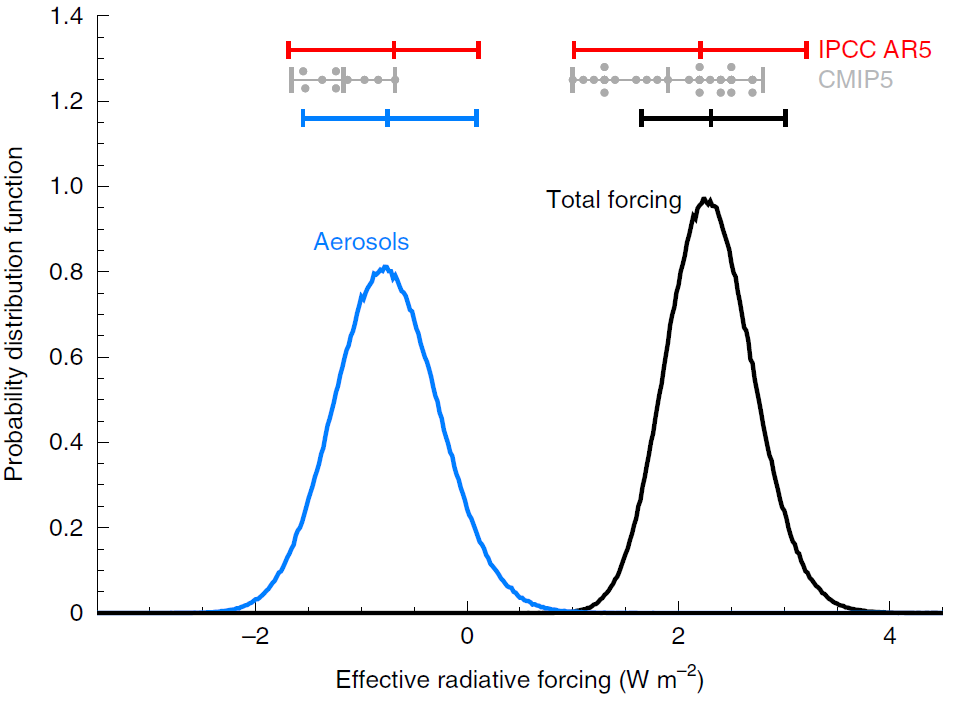Discover and read the best of Twitter Threads about #CMIP5
Most recents (5)
🌳♲💦🌳♲💦 Our paper on the current understanding of Amazon evapotranspiration (ET) has been published online by @EGU_HESS! 🌳♲💦🌳♲💦 @DomSpracklen @lgarciacarreras @JohnMarsham 1/7
hess.copernicus.org/articles/25/22…
hess.copernicus.org/articles/25/22…
We estimated Amazon ET using a catchment-balance approach and compared our results with remote sensing and reanalysis products, climate models from #CMIP5 and #CMIP6, and flux tower data. 2/7
Most products struggled to capture key features of Amazon ET, like the strong seasonal cycle, and the fact that Amazon ET is mostly limited by available solar energy. 3/7
Time to share our new paper published today in @EGU_TC " Diverging #future surface mass balance between the #Antarctic ice shelves and grounded ice sheet". 🥳 Message: The SMB is projected to increase over the grounded ice but to decrease on the peripheral ice shelves. (1/n)
We use our regional climate model #MAR to downscale 2 #CMIP5 and 2 #CMIP6 models that were carefully selected over the #Antarctic ice sheet . From 🌍 to🇦🇶using MAR as 🧐 (2/n)
The surface mass balance (ie, difference between accumulation and erosion at the ice sheet surface) is projected to increase ↗️ due to Global Warming. (3/n)
Is the strong future warming found in several next-generation #CMIP6 climate models realistic? We apply weights based on the models’ historical performance and independence to find out.
Our study is now published in @EGU_ESD 👇
doi.org/10.5194/esd-11…
1/🧵
Our study is now published in @EGU_ESD 👇
doi.org/10.5194/esd-11…
1/🧵
We calculate distributions of change in different variables, like the Transient Climate Response (a comparable measure for how much a model warms due to CO2 🏭). Weighting can considerably shift these distributions and increase their skill.
2/🧵
2/🧵
New paper with @piersforster now out in @NatureClimate - Energy budget constraints on historical radiative forcing nature.com/articles/s4155…
Provides a top down energy budget constraint on historical radiative forcing of 2.3 (1.7 to 3.0) [5-95%] Wm-2. Thread: [1/n]
Provides a top down energy budget constraint on historical radiative forcing of 2.3 (1.7 to 3.0) [5-95%] Wm-2. Thread: [1/n]

Radiative forcing is a fundamental quantity for understanding the drivers of climate change, yet significant uncertainty remains in our quantification & model representation of it. For example see any paper that includes @gunnarmy including this epic journals.ametsoc.org/doi/abs/10.117… [2/n]
What we do is combine measurements of historical temperature change dT & Earths heat uptake dN alongside model reconstructions of Earth’s radiative response Y. Constrains historical forcing F via energy budget eqn F=dN+YdT. Like Otto etal nature.com/articles/ngeo1… in reverse [3/n]
We just published a paper on climate sensitivity in #CMIP6 models: agupubs.onlinelibrary.wiley.com/doi/abs/10.102…
Figured it was time for my first twitter thread!
Figured it was time for my first twitter thread!
We found that effective climate sensitivity (#ECS), when averaged across all #CMIP6 models* (orange), was larger than in #CMIP5 (blue) by about 0.6 deg C (about 1 deg F).
*that were available by the end of 2019
*that were available by the end of 2019

This is mostly (but not entirely) due to stronger positive feedbacks from changes in low-level clouds. That is, most models predict that as Earth warms, cloud properties change so as to allow more sunlight to be absorbed, causing additional heating & ultimately more warming.

